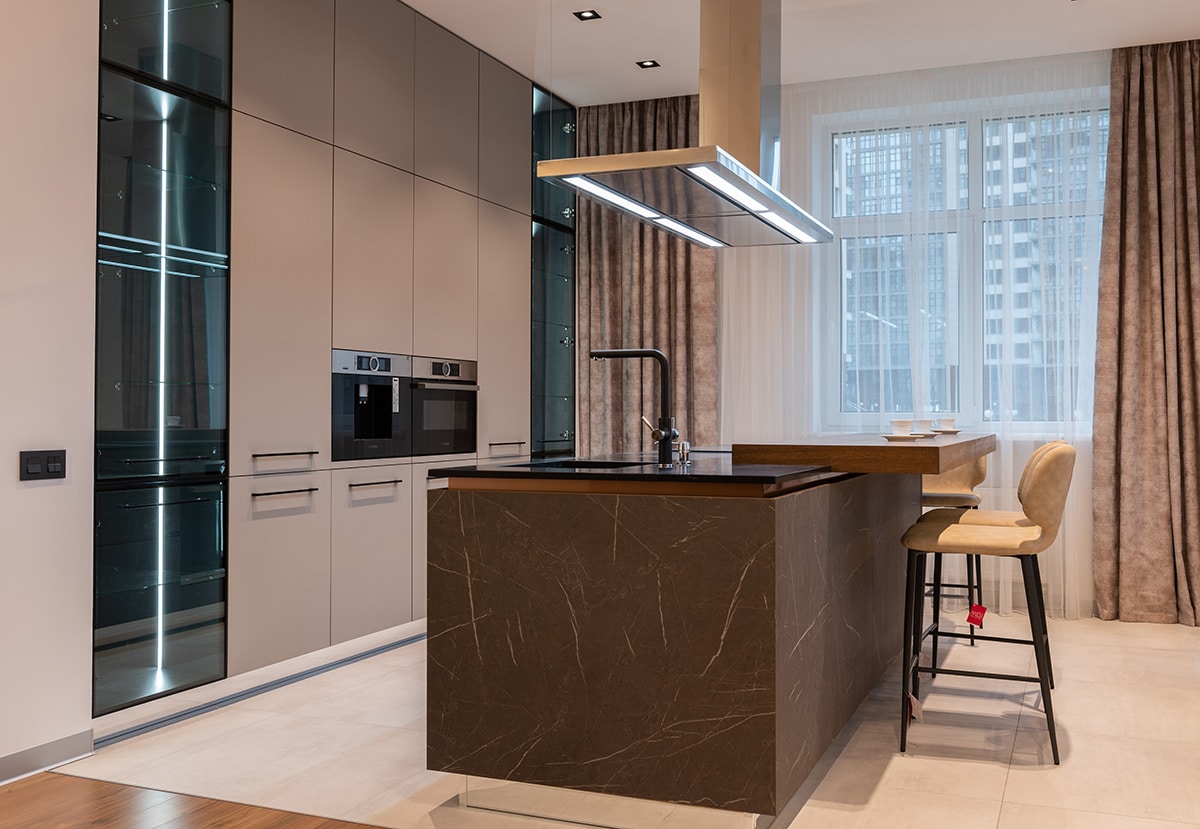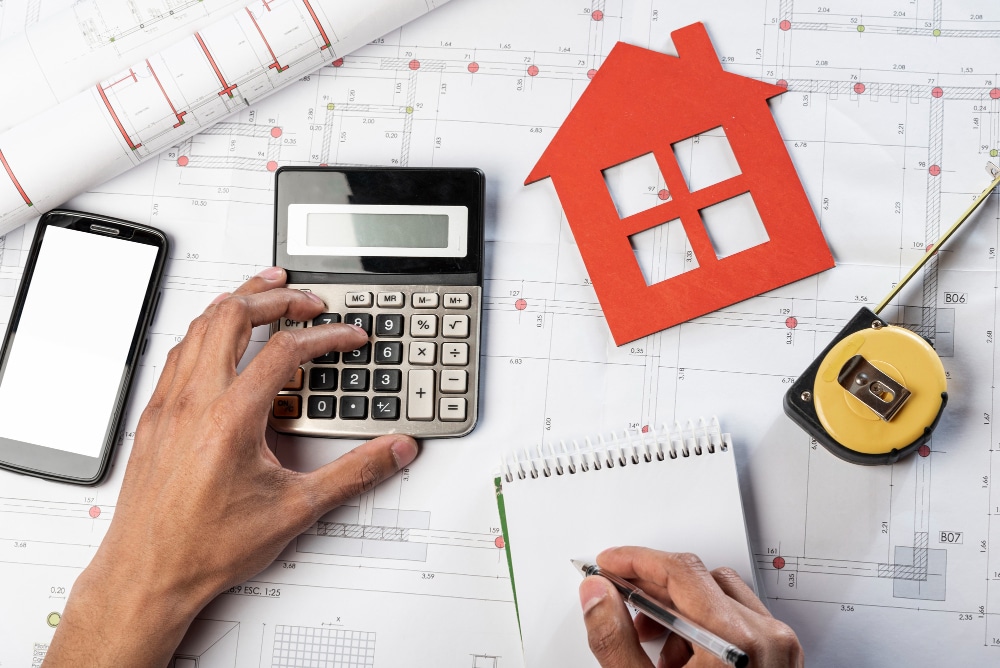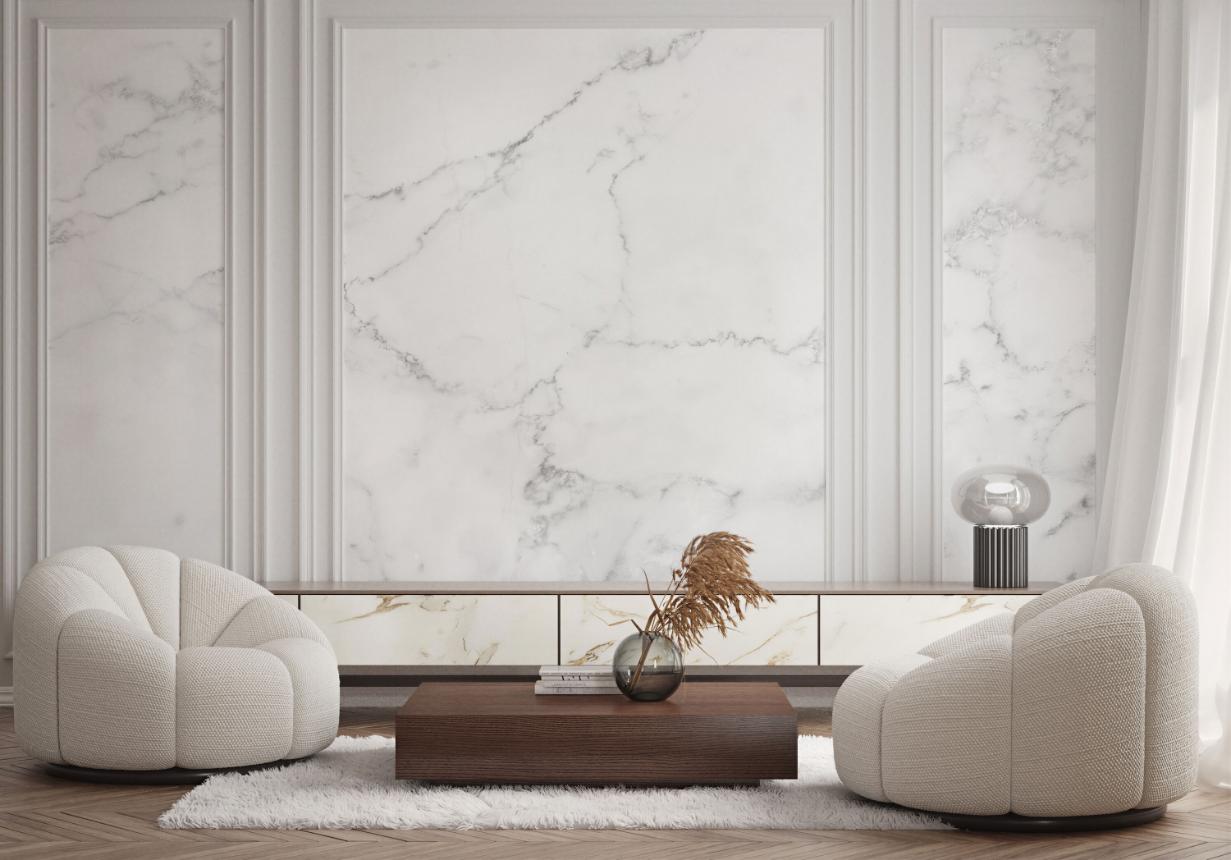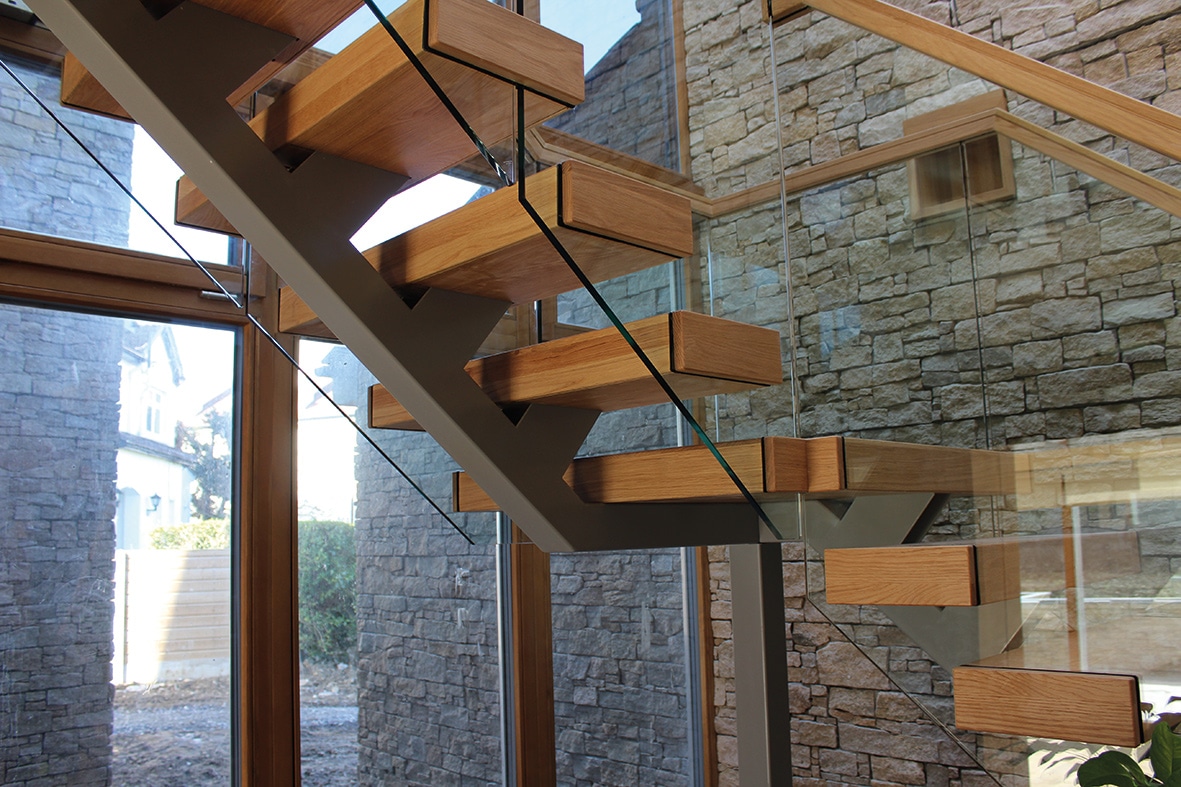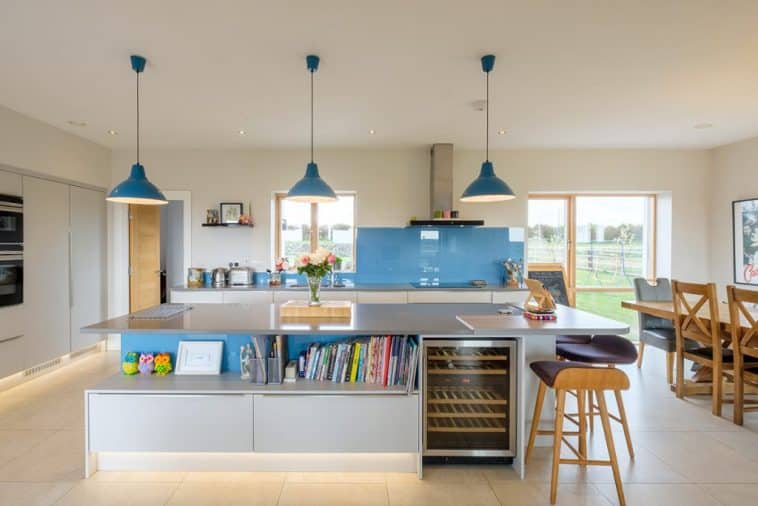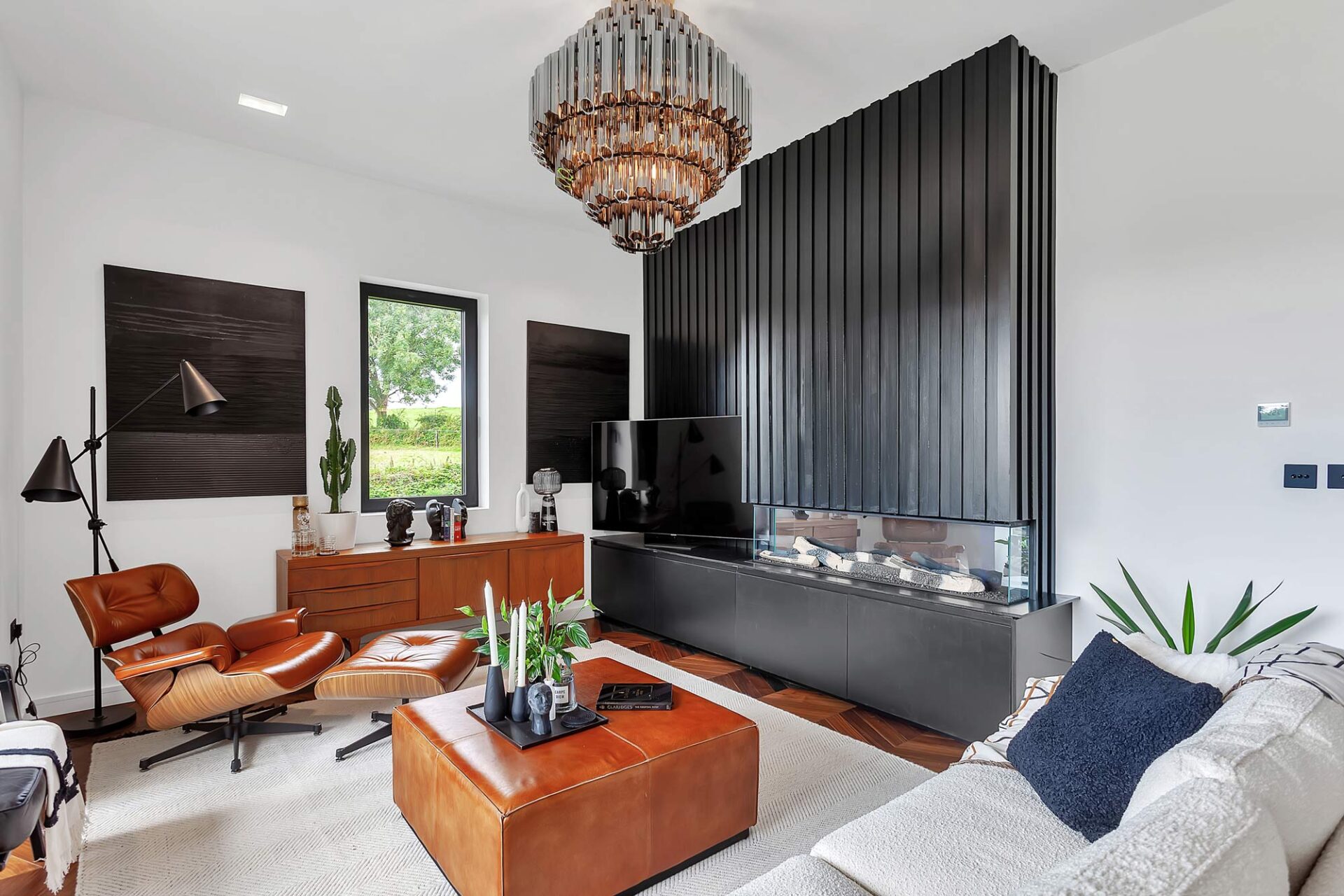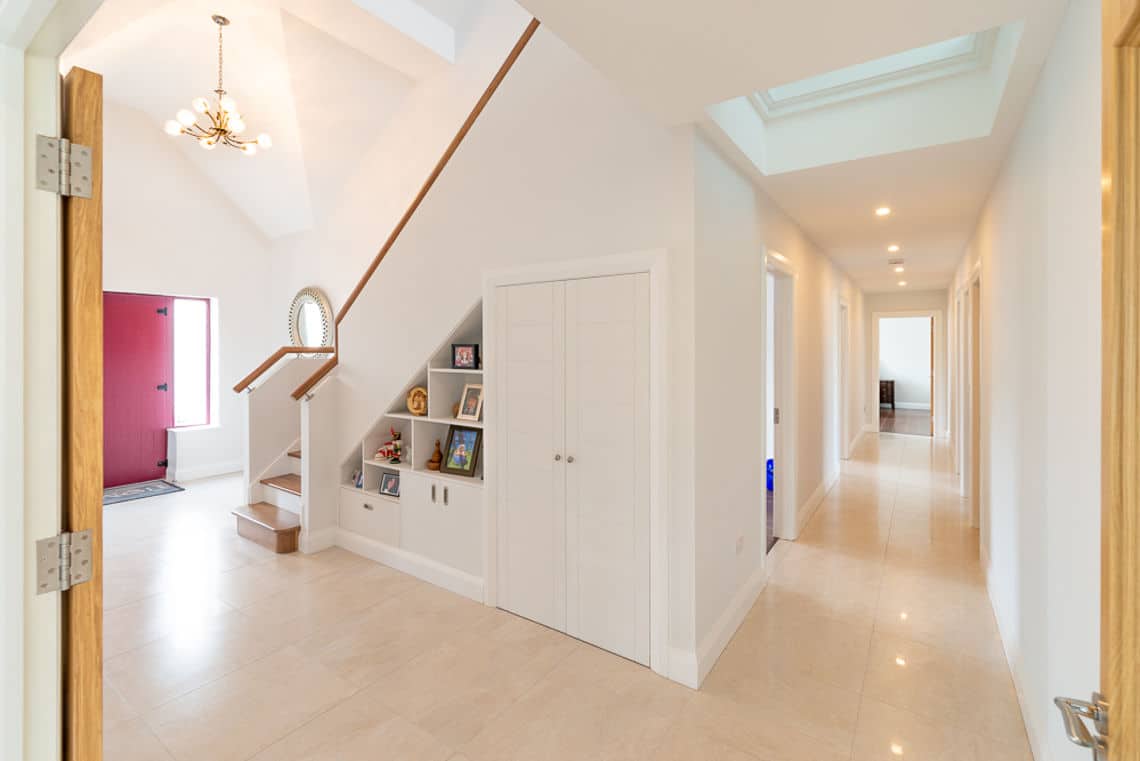The whole mood and feel of a room, or even of a whole home, can be altered by its lighting. Despite this, we often give more thought to our kitchen tap.
aylight is the oldest way of lighting a building but once the sun goes down, we need to add other types of light source to make life safe and comfortable. Prehistoric peoples used oil lamps burning animal or vegetable fats while fuel and gas lighting in the 1800s brought affordable light to our homes and streets.
Today we all take electric lighting for granted as a way of illuminating our homes. This said, most people give scant regard to how their new build home will be lit and are then disappointed when it’s too late. You can’t start planning your lighting too early.
It’s never too soon to plan
It’s all too easy to ruin a perfectly well designed home with bad lighting. Bad as in not fit for purpose or just plain boring.
If you don’t plan at the design stage, you will end up with central, ceiling pendant lights and a few lamps on tables or sideboards. You might even throw in a few spotlights in the mix, which can easily give an airport runway feel. And your dream home will be pretty drab and less enjoyable than it could be.
As with other aspects of design, draw inspiration from everywhere you can think of, learn from buildings and homes you enjoy being in. There is no copyright on ideas and you’ll be able to crib all kinds of tips if you keep your eyes open as you plan your own lighting.
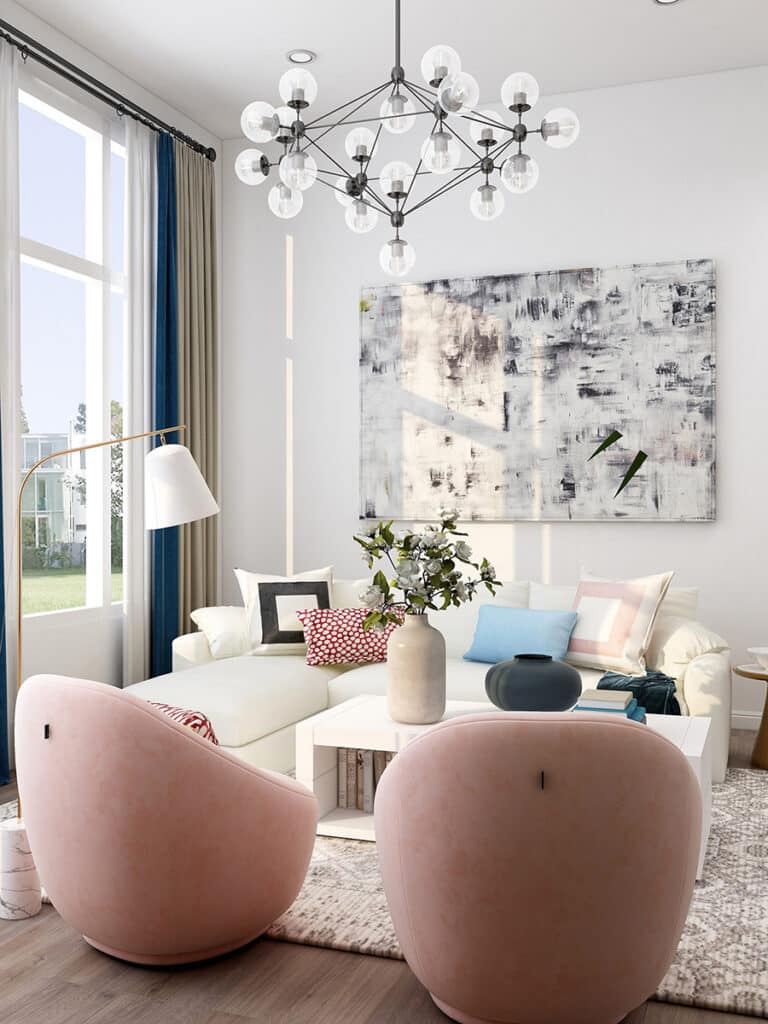
Then engage your architectural designer early on in this discussion and if possible, employ a lighting designer to give you some ideas (or, more likely, tips to avoid the obvious traps).
In this discussion remember that contemporary architecture can all too easily have a commercial feel, a downer for someone who wants a cosy mood, which is often enhanced by artificial lighting. Successfully lighting large, hard surfaces and expansive areas of glass walls (with or without blinds/curtains) can be a sophisticated job.
Consider too that lighting and furnishing go hand in hand, and that many architectural designers don’t encourage any form of window obscuration, as it messes with their clean design. Some designers are more concerned about how their creation will look than what it’ll actually be like to live in.
Lighting design tips
Decide on your furniture positions and other key room features, so you can stage your lighting effects attractively. Plan where you’ll have features that need or would benefit from lighting, where you’ll be working or concentrating on things that need good task lighting, and so on.
This is also the stage to think creatively about alternatives to the usual, standard ways of lighting a home. How about lit stairs, alcoves, floors, ceilings, sconces that throw light up a wall, or LED tracks embedded, flush, into the walls?
If you intend to feature special fabrics or pictures it’ll be worth thinking about the Colour Rendering Index of your lamps. Talk to a lighting designer or your electrician about this. This scale measures how natural a light makes things look, compared with daylight. The scale runs from 1 to 100. Aim for 90CRI or above, for the best effects. Lower than 85 can make things look very flat.
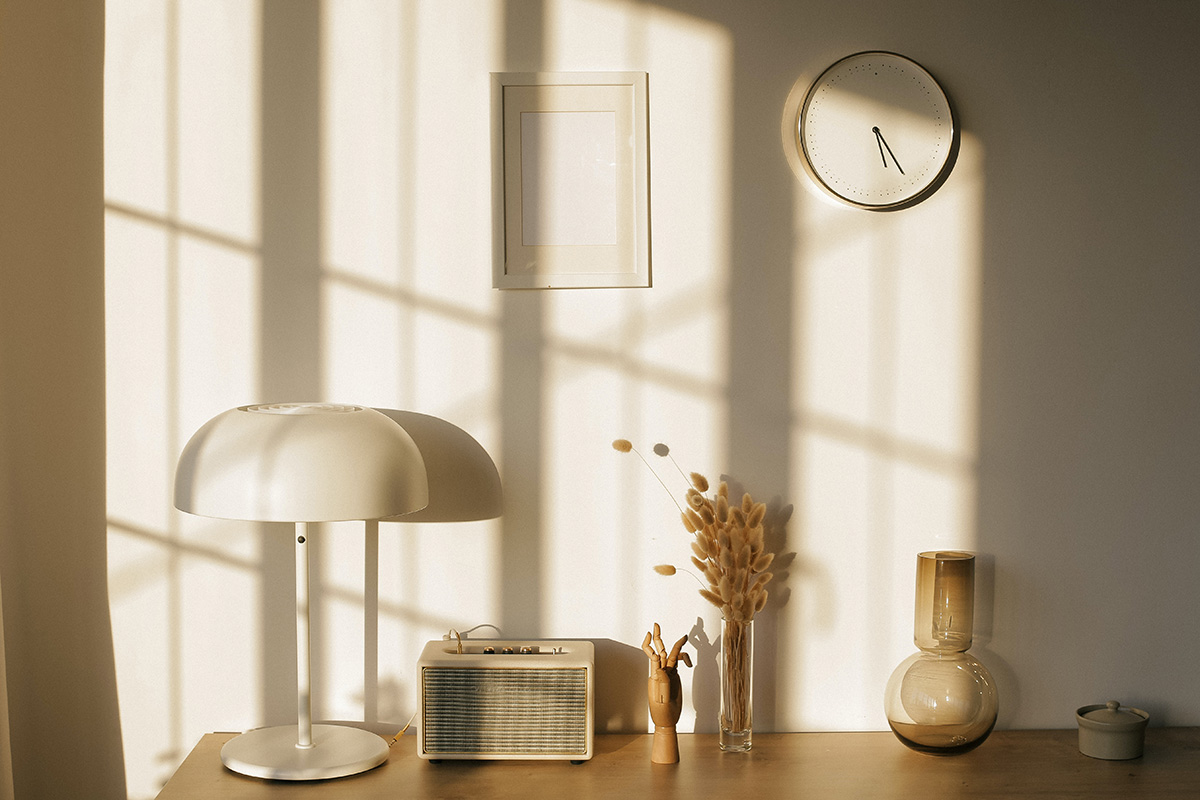
Layer your lighting. There are few worse effects than blankets of lights from a single type of light fitting. Grids of downlighters can be very harsh and make your home feel like an office. If you do use such grids be sure they’re zoned so you can choose selected parts to light various areas in the room independently.
Use the correct colour temperature for the lamps (light bulbs). This is measured in Kelvins (K). Use lamps that provide a temperature of 2,700 or higher for that warm, homely feel.
Whenever possible hide lighting fixtures. When you walk into a room the first thing you’re aware of should not be the light fittings – unless they are designed to be the centre of attention, such as a fabulous pendant. The secret of really great lighting is that the onlooker can’t tell where the light is coming from to produce the effects he or she is observing. This is best achieved by layering your lighting.
Use dimmers to ‘paint’ the room with varying degrees of light to produce really pleasing effects, from even quite modest lighting designs.
Use shadows and contrast. Not everything has to be lit. Pleasing lighting design uses shadows and ‘dark’ areas to great effect.
Avoid glare. There are few more annoying things about lighting than glare. Hide fittings where possible and imagine yourself sitting or standing in every area of the room to check that what you are planning will be glare-free.
Intelligent lighting
Most conventional lighting plans assume that each fitting is controlled individually by a switch or a dimmer. Intelligent lighting systems allow you to control several or all light sources at the same time at the touch of a button, often in groups that can be set in advance to produce particular effects or for security.
These controls can be via a mobile phone, a tablet or a wall-mounted keypad control panel. One system even triggers the lighting in a room to switch on and off when you clap your hands.
The more sophisticated, and expensive, the system, the less cumbersome and time consuming it should be to control. Above all, make sure it’s easy to use.
I shall never forget a friend of mine’s mother reduced to tears when visiting him as she couldn’t put on a simple light in her bedroom. It’s very easy to get carried away with the tech and what it can offer, but there are no prizes for making life impractical for everyday use.
Reducing your lighting costs
Lighting accounts for 20 per cent of the average domestic electricity bill. Here’s how to save.
Replace your bulbs. If you replace all of your old bulbs with LEDs you could reduce your carbon emissions by 65kg per year, the equivalent of driving your car 220 miles.
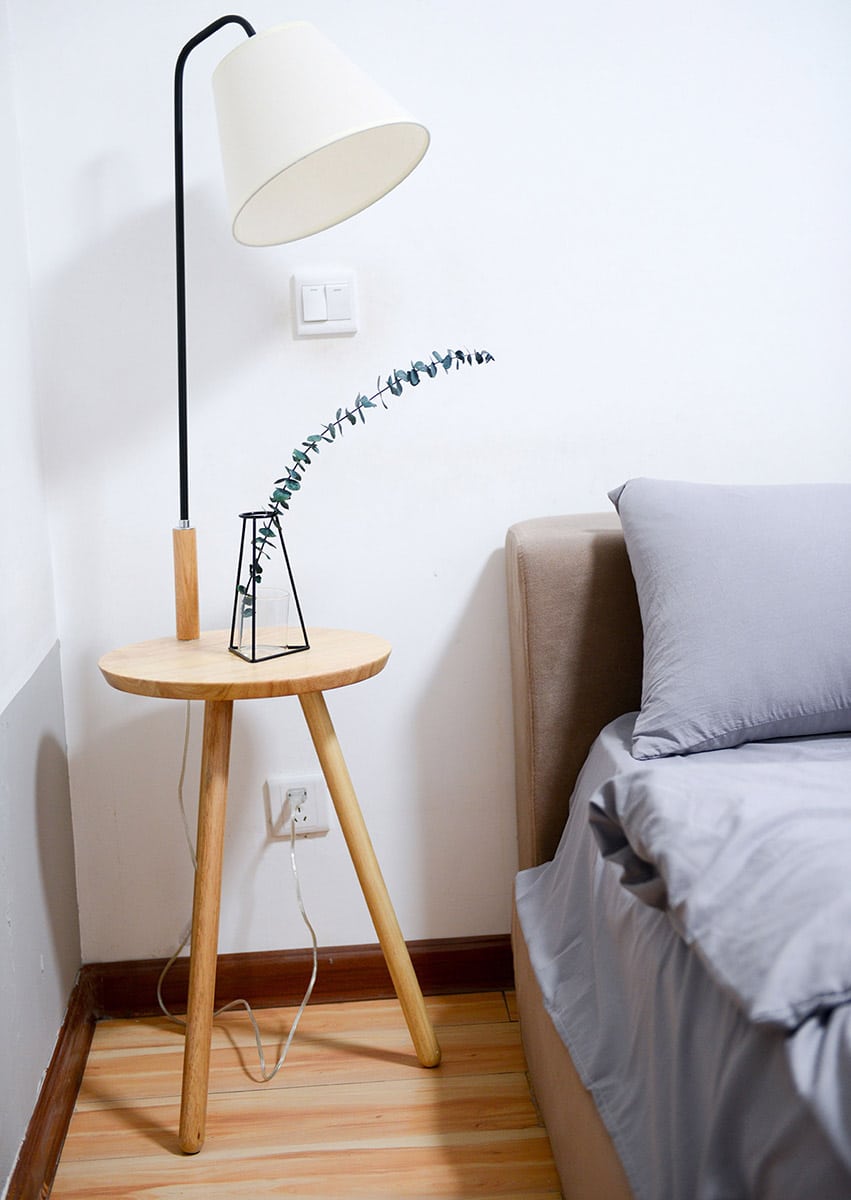
Use motion sensors to turn off the light when you’re not in the room.
Have multiple switches. You don’t always need all of the lights on. How about just using a table lamp or some other, local, source and use the whole lighting system only when absolutely necessary?
Use light shades for table lamps so they don’t obscure too much of the light.
Regularly clean light fittings and lamp shades as dirt greatly reduces light levels; the same rule applies for windows and natural light.

